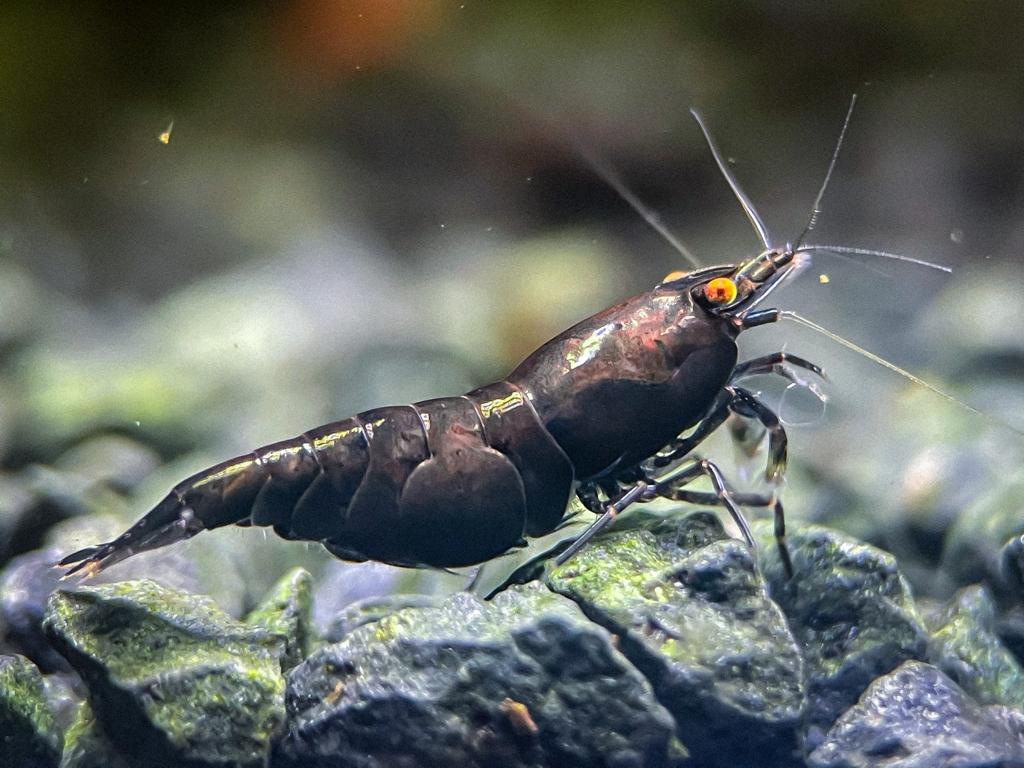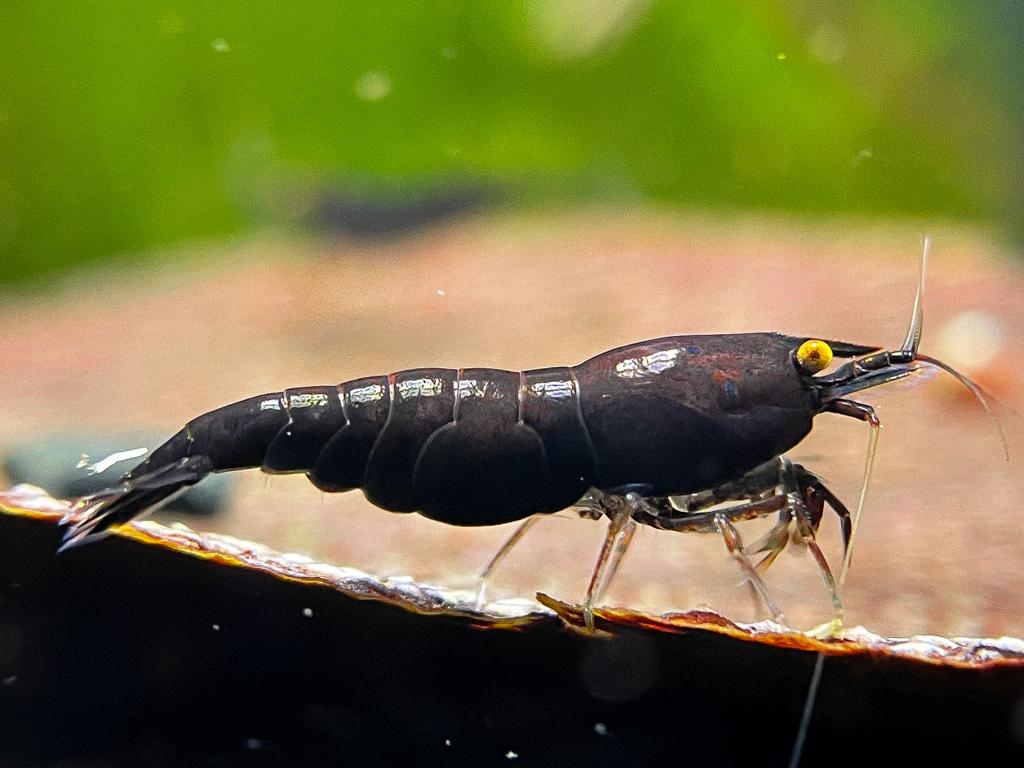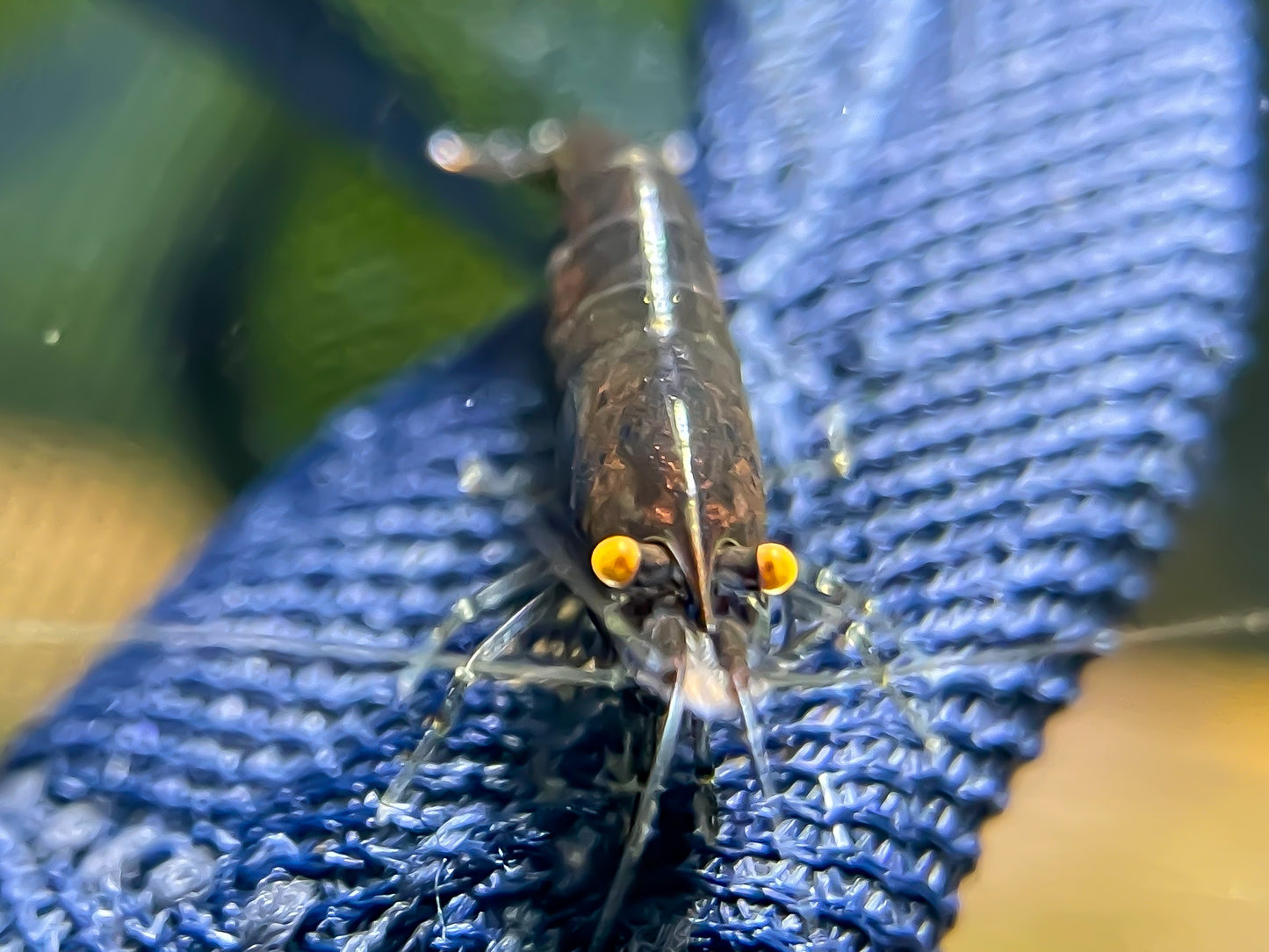Neocaridina "Black Rose OE"
Neocaridina "Black Rose OE"
Quantity discount
Quantity discount
The discounts are calculated automatically.
Couldn't load pickup availability
Black Rose orange eyes (OE) are uniformly deep black in coloration. The orange eyes form a striking contrast to the dark body. We have been maintaining and carefully selecting this line for about two years now.
How stable is this line? The Black Rose OE is a relatively stable color variety. As long as the animals are bred with each other, 100% of the offspring inherit the orange eyes, and around 70% are solid pitch black. Individuals with a brownish pattern still appear frequently, as these shrimp carry typical chocolate genes. It is advisable to selectively breed these out — or alternatively, to selectively breed toward red coloration, as was done with the "Red Onyx." Since the brown hue can reduce the contrast of the orange eyes, we developed another line based on Neocaridina Blue Sapphire, which does not exhibit this issue (see Black Sapphire OE).
Neocaridina with orange eyes? For around two years, we have been offering offspring from our Neocaridina breeding lines with orange eyes (OE). The inheritance of the orange eyes is stable. Visually, the orange eyes of Neocaridina can be distinguished from those of tiger shrimp, as they have a dark spot in the center, possibly indicating residual pigmentation. We published a detailed report on these shrimp in Caridina Magazine (Issue 2/2022). You can find more information on the topic here.
Size at time of sale: Shrimp sold have a minimum size of 0.8 cm, just before reaching sexual maturity. If sexually mature animals are sold, a balanced gender ratio is ensured.
General information on care and breeding: Like all dwarf shrimp of the Neocaridina genus, these animals are very adaptable and can generally be kept without issues in tap water (18–26 °C). In our facility, the tap water values are: pH 7.6, gH 10, kH 9, conductivity 600 µS, temperature 22 °C. The shrimp feed on standard fish food, algae growth, and decaying plant and animal matter. They are excellent scavengers and contribute to the biological balance of the aquarium. Keeping them with small to medium-sized aquarium fish is possible, but providing sufficient hiding places such as moss and roots is recommended. Under optimal conditions, they quickly grow into lively colonies.
Share




Video
Introduce other complementary products.
DESCRIBE HOW TO PAIR PRODUCTS TOGETHER
Subscribe to our emails
Be the first to know about new collections and exclusive offers.




